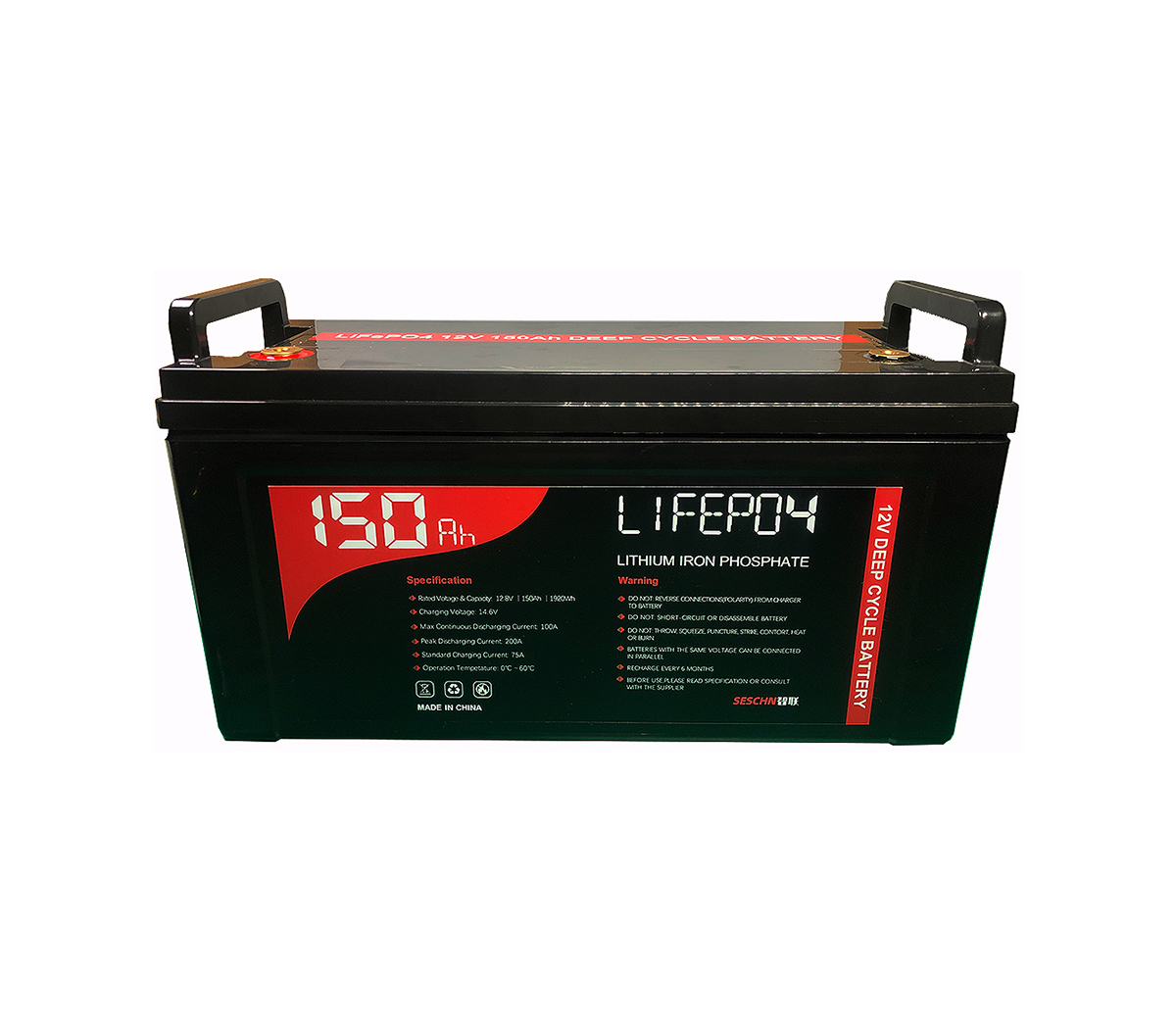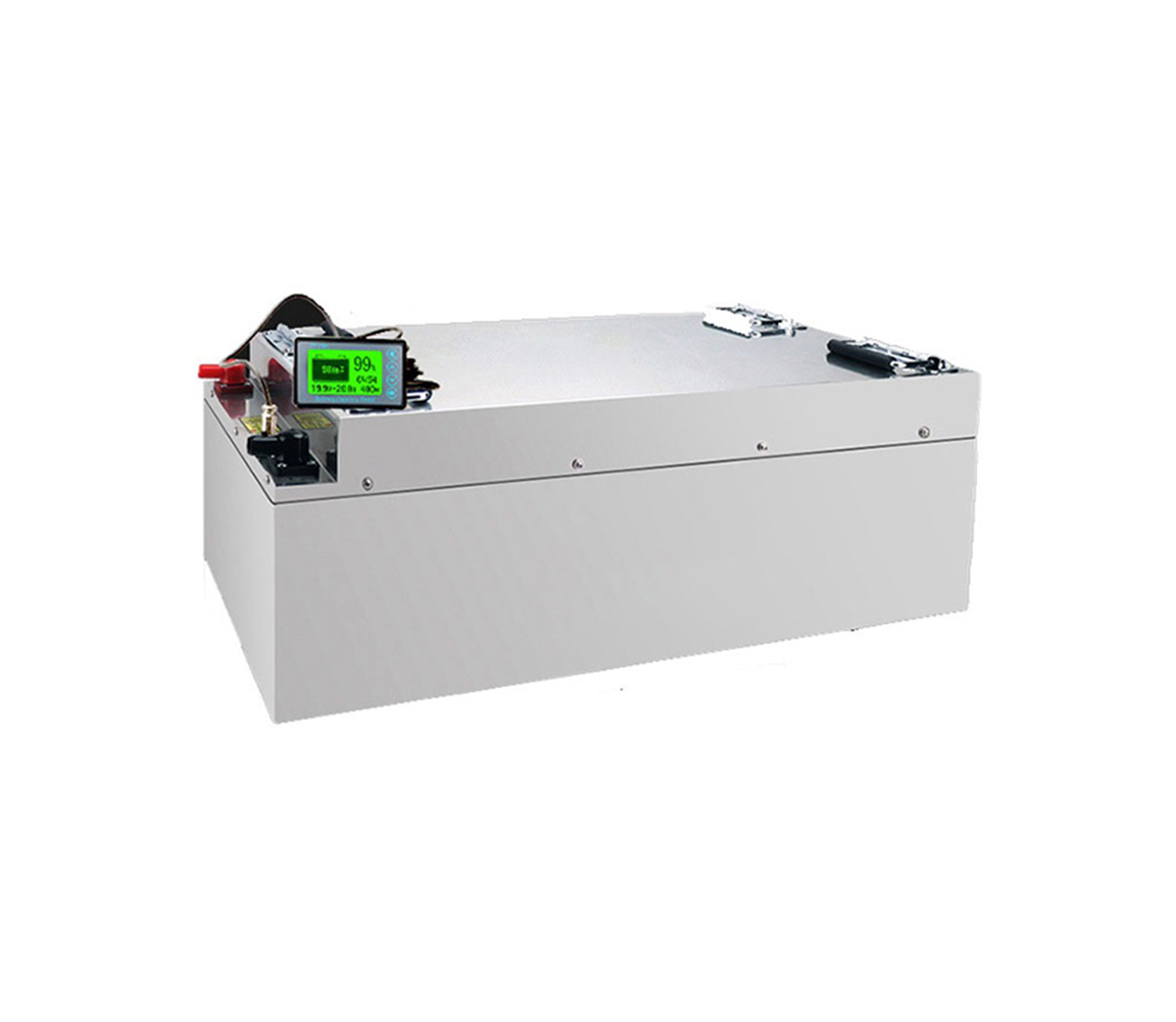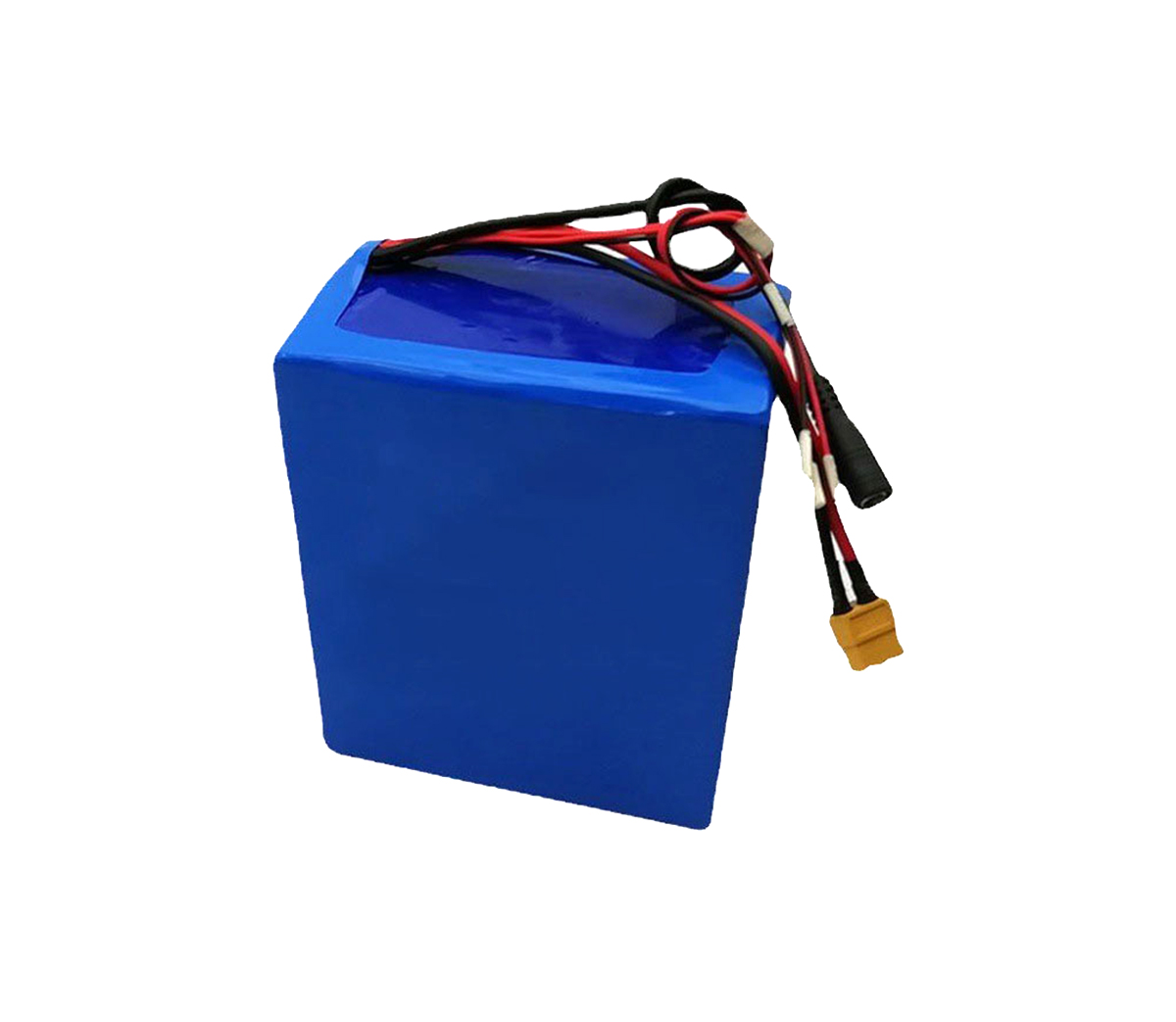As a well-known lithium-ion battery manufacturer, Honeycomb Energy has no
doubts about its R&D strength. SES Power also applies Honeycomb Energy cells
to our products, such as fully intelligent lead-acid replacement products
(12V100Ah, 12V200Ah), high current (2000A) start-up lithium battery, UPS high
voltage lithium battery system (up to 860V), 3Kw~20Kw off-grid, grid-connected,
island lithium battery energy storage system, base station communication backup
battery system (standard 19 inches), photovoltaic solar energy + lithium battery
storage system energy system, etc. Now let us show you Honeycomb Energy's
all-solid-state laboratory, test center and safety laboratory in Wuxi.
The battery cell is the "heart" of the electric vehicle power battery. The
quality of the battery cell determines the safety, performance, energy, charging
capacity and service life of the entire power battery system. The most important
ability of an excellent battery company is to develop batteries. For a car, 80%
of the cost of the power battery pack comes from the cell (currently it may be
more than 85%), and 80% of the cost of the cell is used for the cell
material.
The core competitiveness of a battery company is to continuously develop
and optimize its own products. Let's first take a look at the R&D and
testing capabilities of the Hive Energy Innovation Center.
A: The role of battery R&D center and testing center
For a cell company, the front-end R&D center not only needs to test
cell samples, but also needs to have material R&D, technical experiments and
small-scale trial production capabilities in the R&D process, and gradually
stabilize cell prototype samples. down and finalize performance.
The battery prototypes and tests produced by the R&D center are the key
for battery engineers and development departments to analyze and understand the
battery creation process.
The cell R&D center covers the R&D department of cell raw
materials, cell structure design, cell sample production line and laboratory for
cell testing.
The research and development of the ratio of battery raw materials is very
important: from the mixing, spraying, drying, pressing, and cutting of the
positive electrode material, to the winding and stacking of the positive and
negative electrodes of the battery cell, and the separator, and finally to the
installation of the casing and the electrolyte. All production links such as
injection can be carried out in small batches.
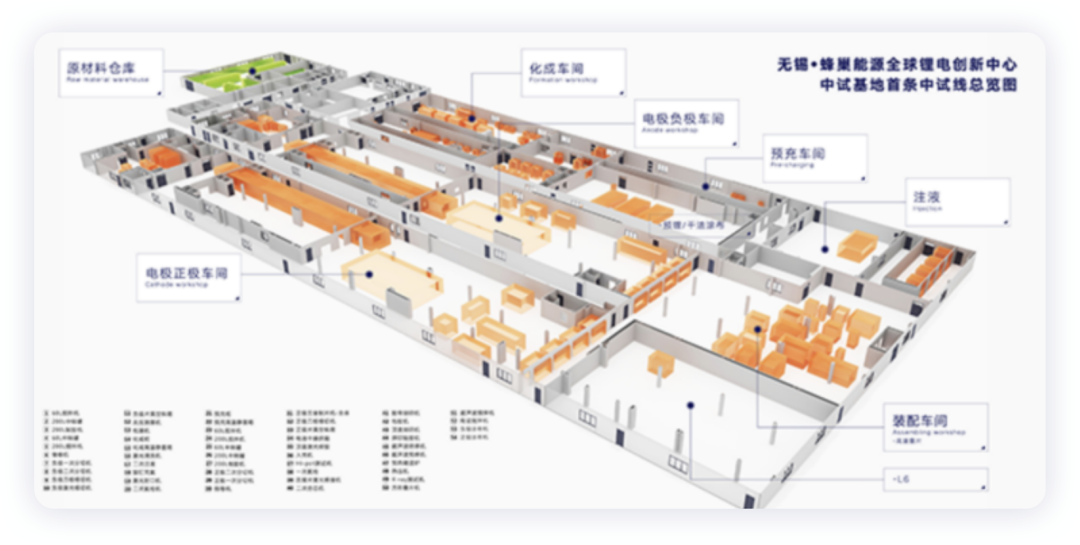
(Experimental production line of Honeycomb Energy)
The verification test in the research and development process of
Honeycomb's battery products mainly includes the physical and chemical
properties of positive and negative materials, electrolytes, battery raw
materials, electrical properties and safety properties of cells and battery
packs.
The battery system laboratory mainly conducts research and development on
cutting-edge materials such as electrolytes, and has the ability to test
positive and negative electrode materials, such as homogenization coating,
electrolyte preparation, physical and chemical performance testing, oxidation
potential and other electrochemical tests. Taking the classic short-knife L600
battery as an example, according to the experimental analysis of the battery
system laboratory, a low-viscosity solvent is selected in the formula of the
battery cell, which can improve the fluidity and conductivity in a
low-temperature environment, thereby improving the low-temperature charging of
long battery cells. It can effectively solve the problem of the sudden drop in
cruising range in winter. The electrolyte is also specially added with
functional additives. When the battery is charged for the first time, a
polymerization reaction can occur at the negative electrode to form a high
temperature-resistant film, which can avoid harmful reactions between the
negative electrode and the electrolyte, and can improve the safety and enhance
the high temperature environment. cycle life. The use of ceramic separators with
excellent high temperature resistance and insulation will help to improve the
reliability of the cells during acupuncture.
B: Equipment is very important:
The honeycomb mainly includes several parts in the equipment.
Physical and chemical analysis laboratory
The physical and chemical analysis laboratory has more than 40 large-scale
high-precision equipment, with as many as 131 systematic testing capabilities,
which completely cover all the testing needs of material development, battery
system development, battery mechanism and safety analysis.
This laboratory is mainly responsible for the testing needs of material
development, battery system development, battery mechanism and safety analysis.
The laboratory uses a "synchronized thermal analyzer-gas chromatography-mass
spectrometer" to accurately analyze the oxygen release of materials and optimize
the thermal stability of the cells.
The internal process control and failure analysis of the battery are
completed by industrial CT. The internal structure and defects of the battery,
such as alignment, wrinkles, etc., are observed through X-rays. in-depth
research.
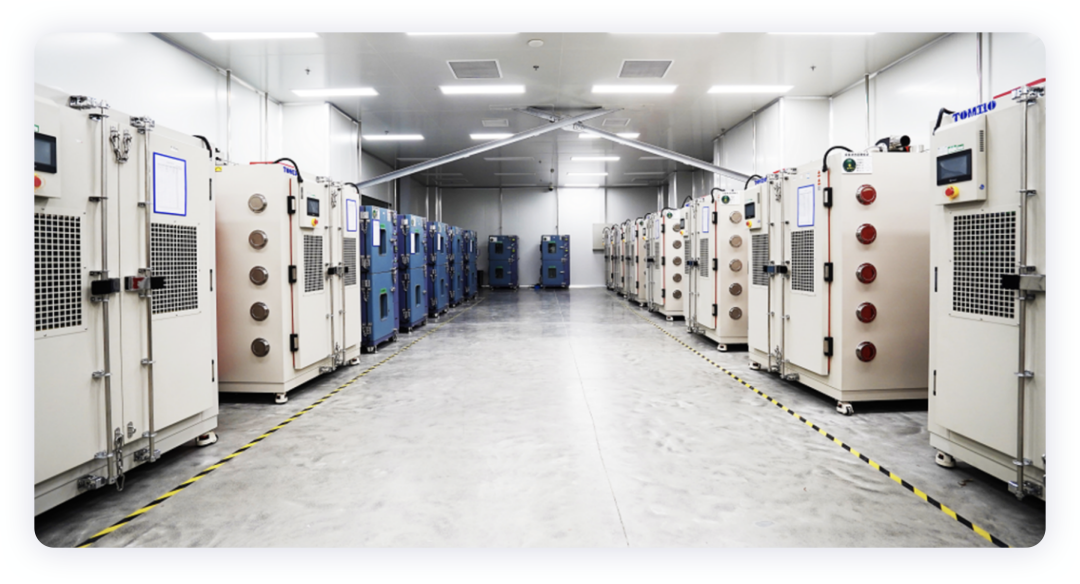
(Electrical performance environmental control equipment)
Electrical Performance Laboratory
It is mainly responsible for the verification of the electrical properties
of battery samples, such as battery capacity, energy, open-circuit voltage and
pulse charge-discharge capacity under different charges, long-term cycle life,
storage life, self-discharge and other electrical properties to determine
whether the designed battery is meet the design requirements.
In order to ensure the accuracy of the test, the cell performance test of
Honeycomb Energy simulates the actual use conditions, uses a metal splint to
simulate the force of the cell in the module or battery pack, and monitors the
pressure change during the charging and discharging process. , Pressure data
collection. In addition, there is a three-electrode test. The auxiliary voltage
channel is used to monitor the voltage of the positive and negative electrodes
to metal lithium, to find the battery's extreme use conditions, to avoid the
precipitation of metal lithium, and to ensure the safety of the battery.
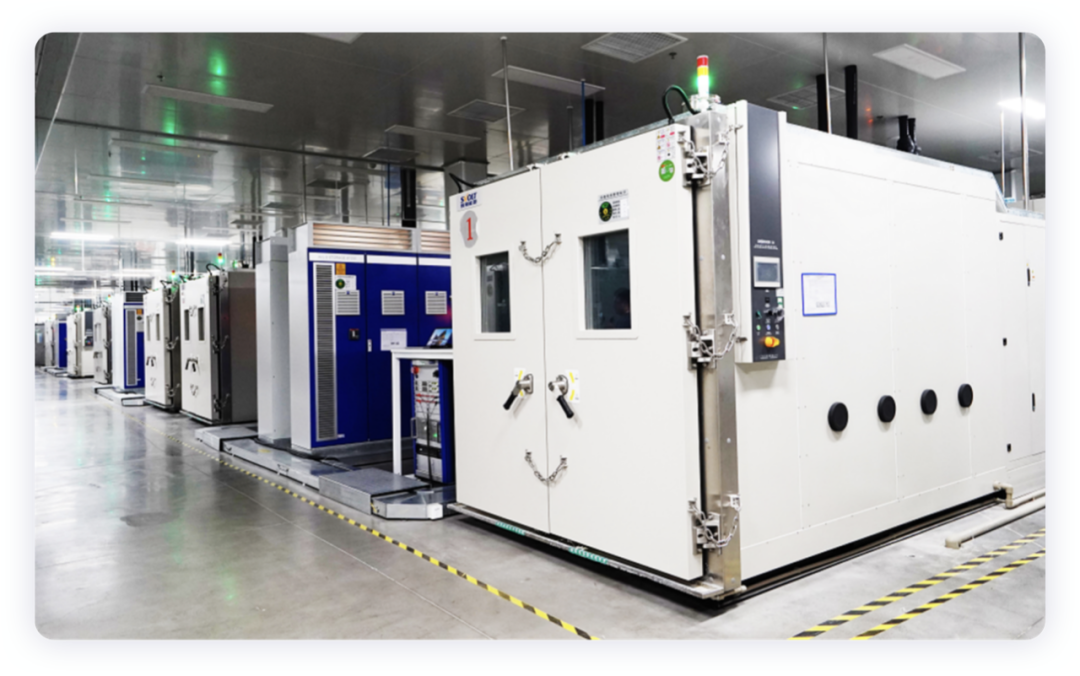
(Honeycomb Energy's battery pack performance test equipment)
The battery safety laboratory covers an area of 5000 square meters and
has more than 30 sets of equipment. It can perform mechanical, environmental and
electrical reliability and abuse tests of battery cells, modules, BMS and
battery packs/systems.
The purpose of the safety test is to verify the safety of the power battery
system in the case of abuse, and the most important purpose is to verify the
protection capability of the power battery system and the protection capability
of the occupants in the event of a dangerous situation. This
Honeycomb Energy has built a complete testing capability in-house with the
purpose of quickly verifying all aspects of the battery's safety
characteristics.
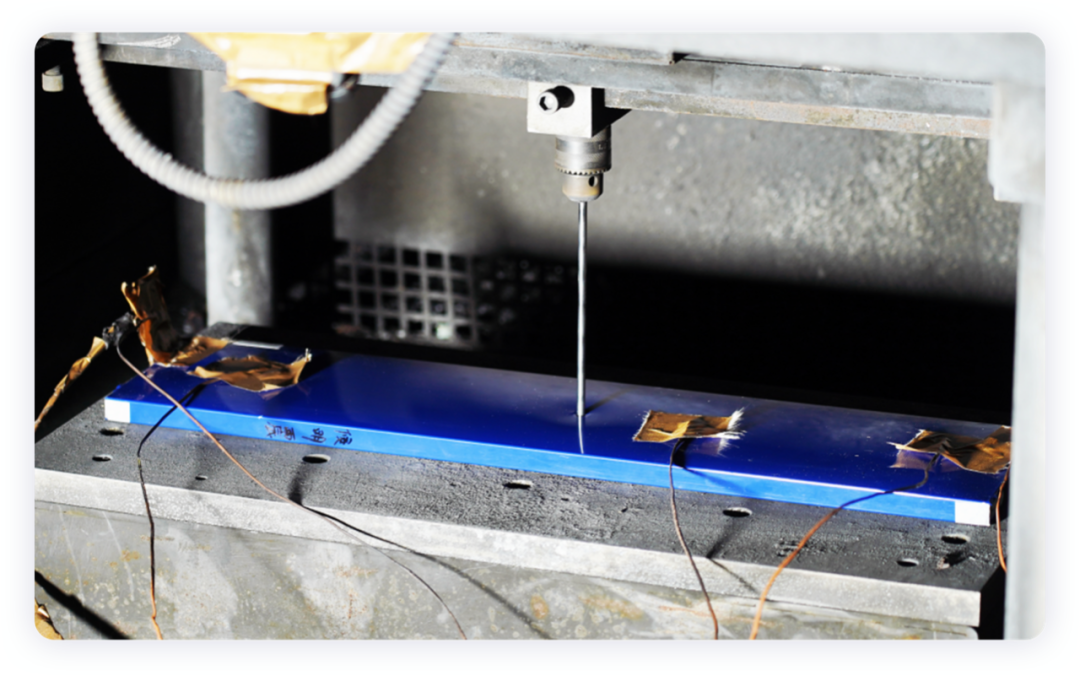
(Overview of the acupuncture experiment)
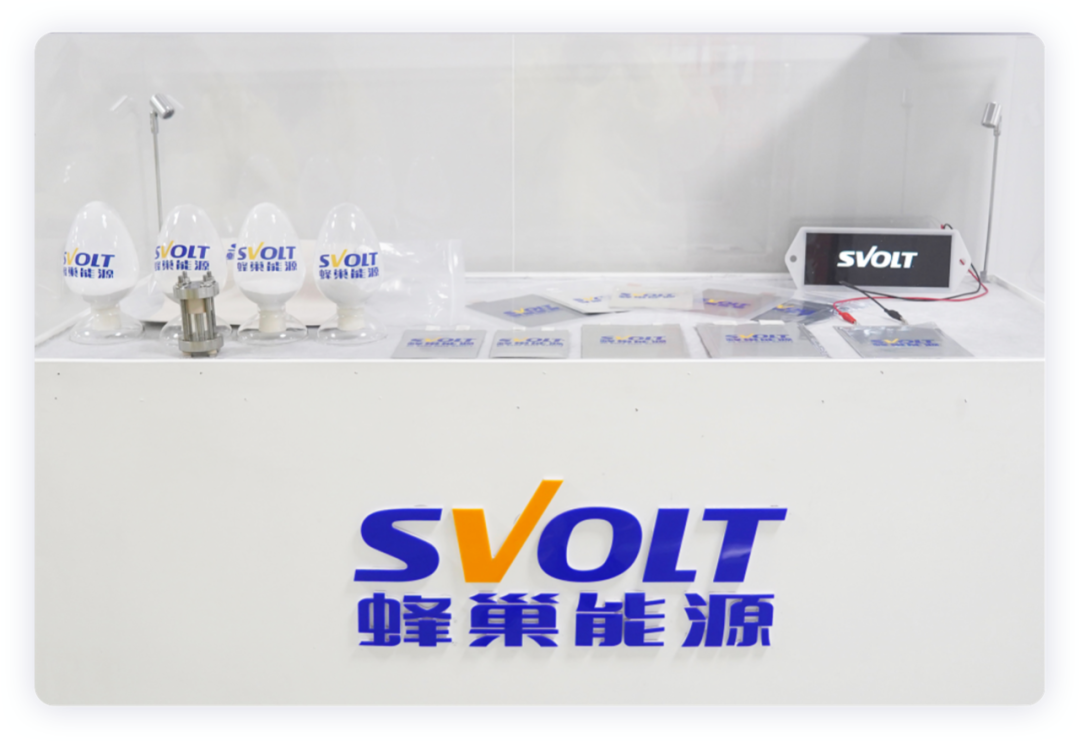
Honeycomb Energy's R&D headquarters in Wuxi is a comprehensive power
battery R&D center, which includes solid-state batteries and other technical
routes, and has built a number of R&D trial production lines, BMS
laboratories, performance laboratories, and safety laboratories. Different
customers provide R&D samples, technical services and overall solutions,
which are indeed very advanced.














